Alexis Self examines Gerry Dalton’s grand but endangered domestic project
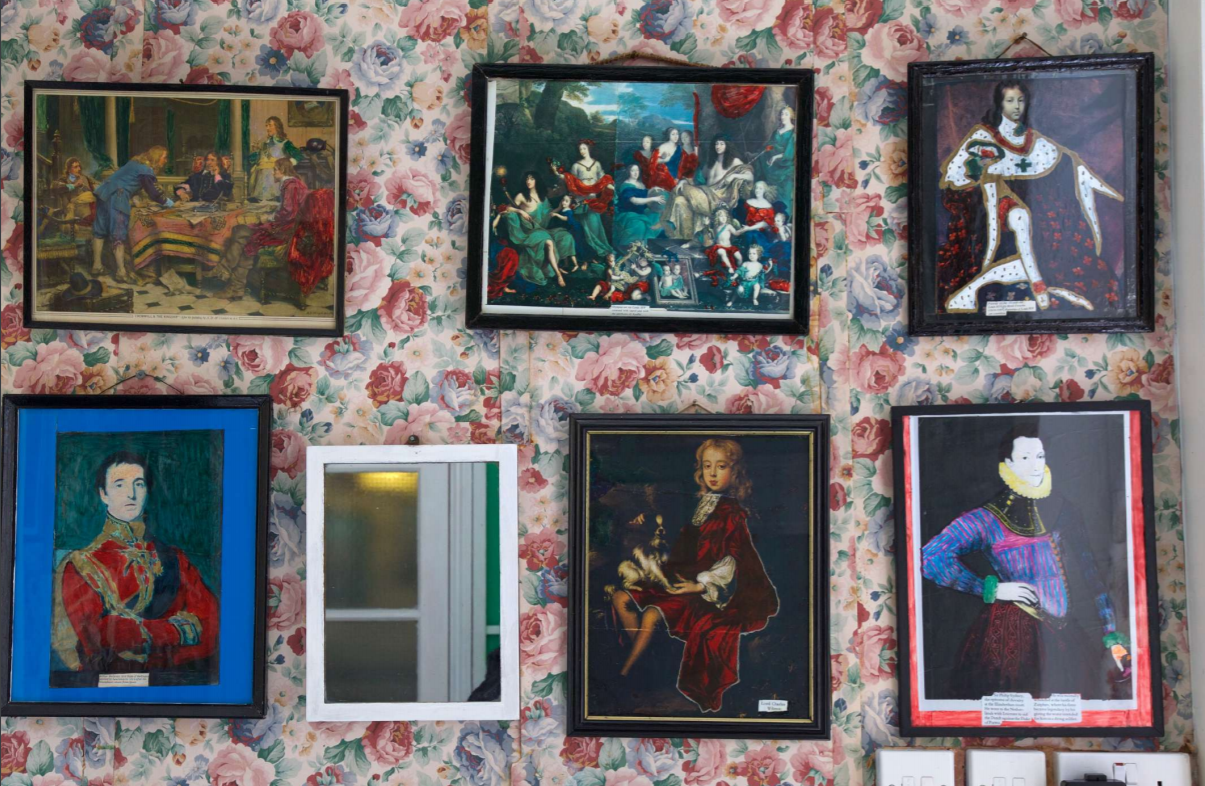
Gerald ‘Gerry’ Dalton was a retired Royal Mail porter who lived for the last 30 years of his life in a ground floor flat off the Harrow Road in West London. He emigrated to the city in the 1950s from Co. Westmeath, Ireland. Having left behind poverty and the stricture of the Catholic Church, in his new home Gerry had to contend with the no less insidious effects of anti-Irish racism and social isolation.
He died three months ago aged 83, only a dozen or so people attended his funeral. Not much is known about Gerry other than that he liked to keep to himself, and that he had a close friend named Nelly who died in the early 1990s. His flat backed onto the Grand Union Canal not far from Westbourne Park tube station.
On the narrow strip of soil between his back wall and the water he created a landscaped pleasure garden filled with rows of hand-sculpted statuettes and a 50-metre mural made of mosaic and tiles. His work is obscured from the opposing bank by a row of conifers, but Gerry allowed his neighbours and their children to enjoy its splendour.
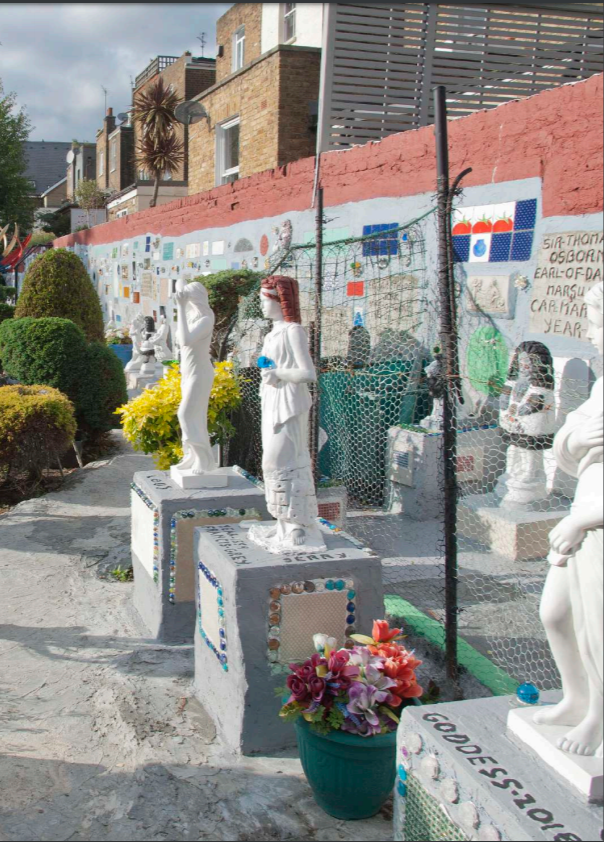
From the bank, one can peer into his small back garden in which hundreds of concrete statues are arranged in neat formation. Unlike those by the canal, these figures are not painted white, but they do have a uniformity, resembling an inner London Terracotta Army. Carved into their bases are the names of historical figures, mostly monarchs and other notable persons from the Age of Reason (Elizabeth I, Jonathan Swift, Mary Wollstonecraft), and each has some distinguishing feature—such as a hat, sword or big bushy beard.
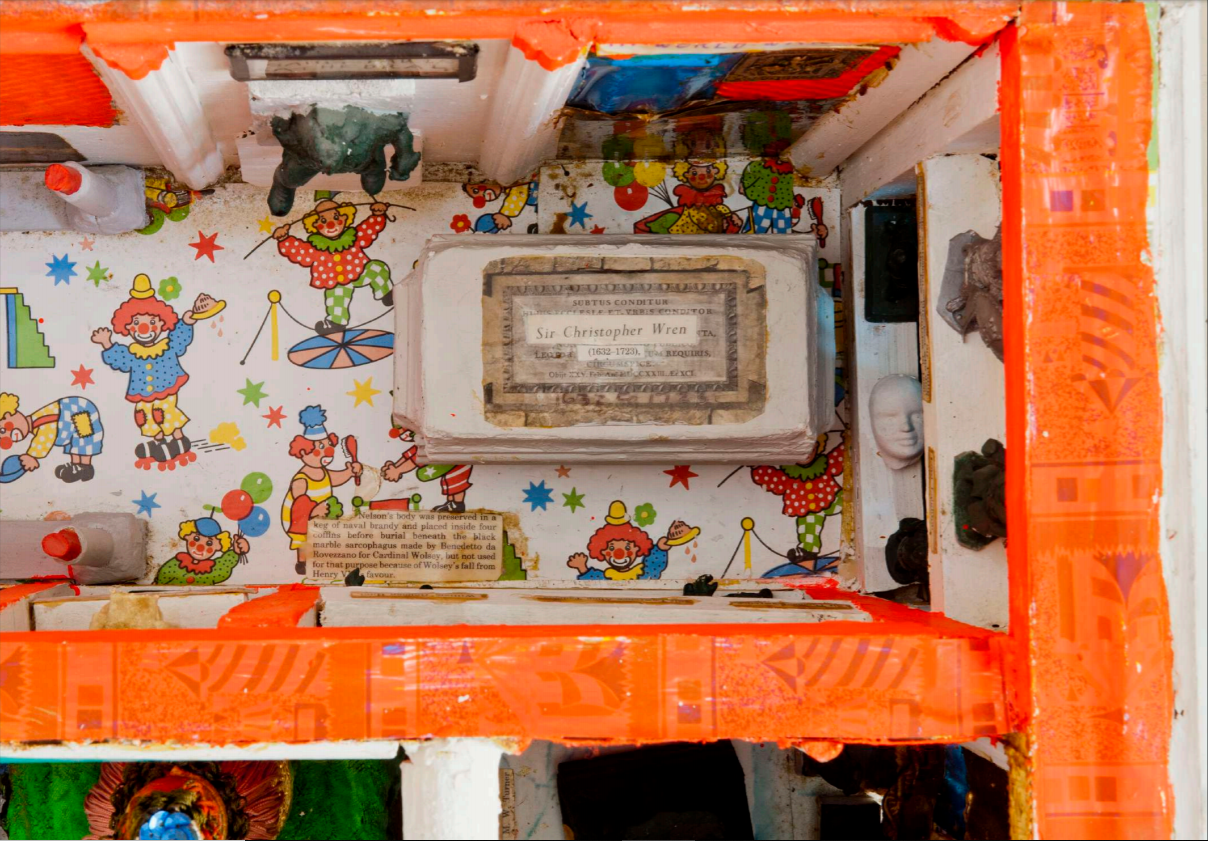
As he neared the end of his life, Gerry began inviting neighbours inside the previously off-limits flat. What they saw astonished them. The carefully wallpapered interior is covered in over 170 wall mounts including collaged portraits and handmade figurines of assorted rogues, eccentrics and villains. In place of furniture is an A-List model village—Buckingham Palace, the Houses of Parliament, Hampton Court—made from repurposed wood and painted in Gerry’s preferred white-brown colourway.
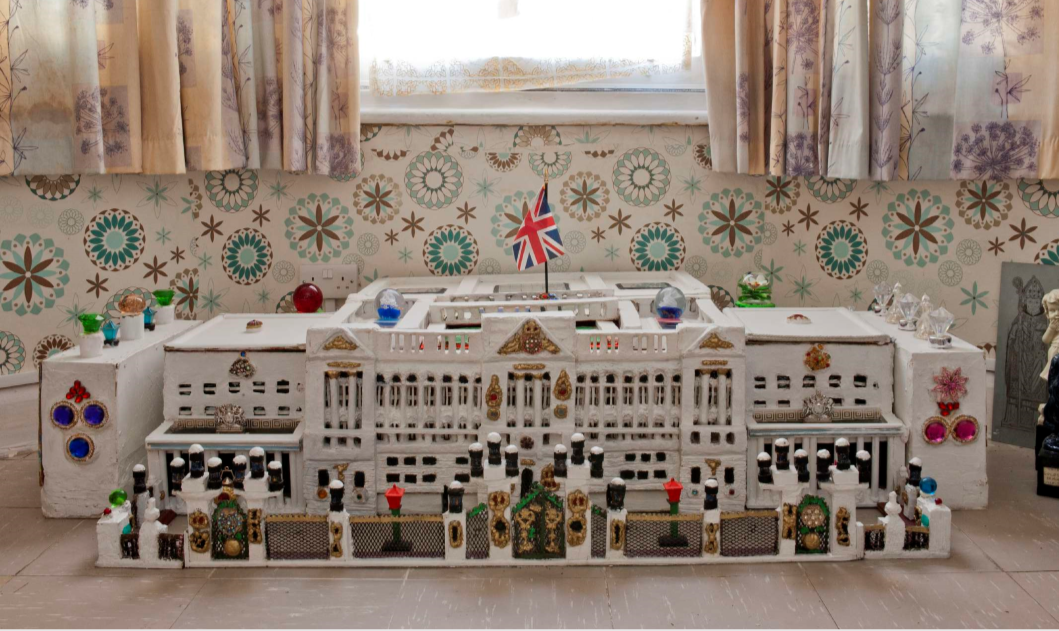
Comfort and convenience took a back seat in this domestic grand projet—Gerry’s bathroom sink is covered by a scale model of Westminster Abbey and, aside from a single mattress, there were only two chairs in the apartment. It is unclear what compelled this man to so decorate his inner sanctum. Neighbours I spoke to suggested it may have been a shrine to the late Nelly. As to why he kept it a secret—it’s doubtful Gerry’s idolatry of Britishness and royalty would’ve gone down well among the local Irish community.
Recently, Gerry muttered to a neighbour that when they discovered what was inside his flat it would be like “finding Pompeii… or something.” In its reflection of a fastidious immigrant man alone in the big city, Gerry’s Pompeii mirrors the wood carvings of the Kenyan-born civil servant Khadambi Asalache at 575 Wandsworth Road. Asalanche owned his flat and bequeathed it to the National Trust after he died. However, Gerry’s place is part of the social housing scheme Genesis Housing, which had said it would reclaim the property by 31st October 2019.
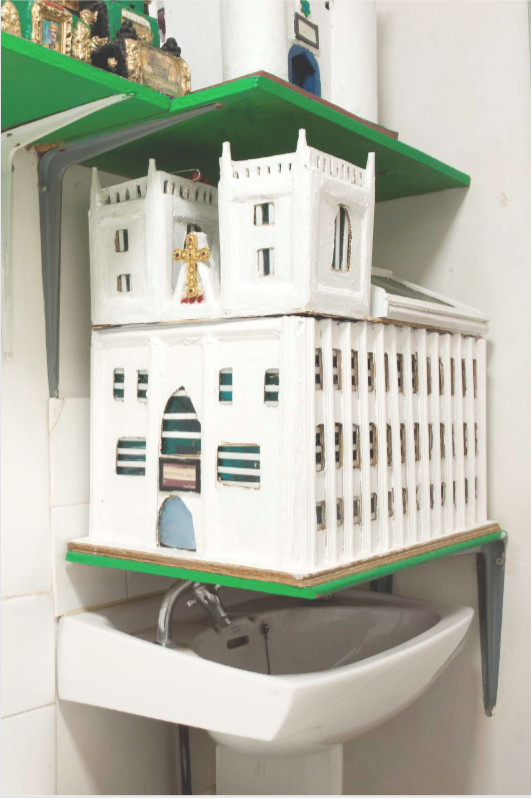
That date has now passed, and the directors of Genesis find themselves in an unenviable position. It’s hard to argue against the redistribution of precious social housing in a London borough (Westminster) beset by an acute shortage of it; indeed, Gerry wouldn’t have been able to create his world without such provision. At the same time, this site-specific outsider artwork has historic and cultural value—standing as a testament to the obsessive creativity of an isolated individual in a pre-internet age London.
Gerry’s neighbours, alongside people like Stephen Fry, Jarvis Cocker and Charles Saumarez Smith, are leading efforts to preserve his flat and its contents for posterity. Their ultimate aim is to raise enough money to purchase it from Genesis and convert it into a museum; though there are secondary goals to have the work properly transported, catalogued and maintained–which is perhaps the more sensible option.
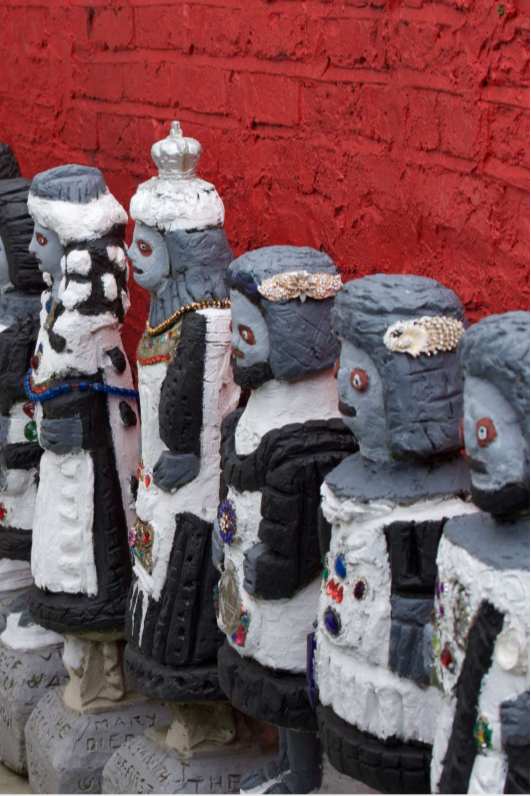
It’s interesting to wonder whether, in the London of today, Gerry would’ve been able to keep his miniature world a secret. Or if, in a culture in which flaunting one’s talent and stuff is encouraged, he’d have felt compelled to share it. Gerry’s kaleidoscopically folkish world must’ve felt like his own private castle but, in a nation of digital curtain-twitchers, it might just represent the final frontier.
Sign the petition or donate to help save Gerry’s Pompeii